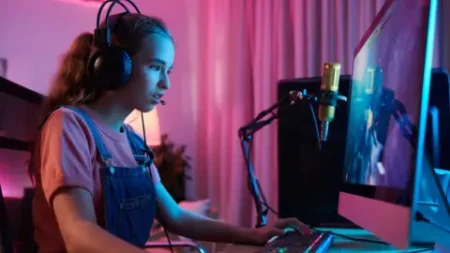**Robot Vacuums: From Cleaning to Multifunctional Helpers**
In the evolving realm of domestic automation, the humble robot vacuum is emerging as a potential multi-tasking assistant, potentially capable of far more than just sucking up dirt. Recent innovative research from the University of Bath suggests that these devices could shift from mere cleaning tools to include tasks such as watering plants and entertaining pets. This idea stems from a growing concern among scientists that many existing robot vacuums remain underutilized, spending a significant part of their operational life inactive.
A study team led by Yoshiaki Shiokawa and Adwait Sharma at the University of Bath aimed to explore these possibilities. They found that conventional robot vacuums typically operate for less than two hours each day, leaving a gap in their potential productivity. To illustrate their point, the researchers reprogrammed a Roomba device—a popular brand of robotic vacuum—to undertake a variety of tasks beyond its primary function of cleaning floors.
The modifications allowed the robot to engage in multiple chores, prompting a re-evaluation of how we perceive these automated assistants. “These machines are often seen as limited in their capabilities,” remarked Shiokawa. However, he emphasizes that with the right programming, these devices could actually perform several practical tasks around the home, enriching their utility.
While some critics may deem these proposed uses as far-fetched, especially given current models’ occasional limitations with everyday obstacles like carpets and household clutter, the researchers have methodically established that robot vacuums could be transformed into adaptable tools. They identified a whopping 100 possible functions that could be integrated with relatively straightforward adjustments.
As part of their experimental work, they successfully programmed a Roomba to accomplish four distinct tasks. These include:
1. A mobile phone charger that could follow a user throughout the home.
2. A workout video projector that could display exercises on walls or ceilings, enhancing home workout routines.
3. A surveillance camera to monitor cooking activities or other essential tasks at home.
4. A ‘do not disturb’ display to indicate when the vacuum is busy, minimizing interruptions during important activities.
And the ideas do not stop there. The research team envisions further capabilities, such as teaching the vacuum to carry groceries from a vehicle into the house or even play with pets in a manner that’s safe and engaging.
The implications of this research extend beyond mere convenience; they highlight an evolving expectation for robotics in our daily lives. “For most of the day, they sit idle,” lamented Shiokawa, stressing the need to capitalize on their potential. However, he also noted that implementing these adjustments would likely require attachments and accessories—not typical for the average consumer but feasible for innovative households.
Moreover, the global market for household robots, previously valued at $10.3 billion in 2023, is projected to reach approximately $24.5 billion by 2028. This growing acceptance of robotic devices indicates that households will increasingly feature multifunctional robots, blurring the lines between simple cleaning devices and comprehensive home assistants.
Dr. Adwait Sharma concurred with Shiokawa’s insights, highlighting how robot vacuums’ idle time presents a significant opportunity to develop integrated systems that seamlessly fit into various aspects of our daily routines. The overarching goal of such advancements is to extend the functionalities of these robots and make them valuable allies in household management.
In sum, the research from the University of Bath represents an exciting frontier in robotics where the potential of devices like the Roomba could be fully realized, evolving from single-task cleaners to versatile household helpers that enhance our living spaces and streamline everyday tasks. As these adaptive systems become more sophisticated, they promise to reshape the ways in which we interact with technology in our homes, ultimately enriching our quality of life.











